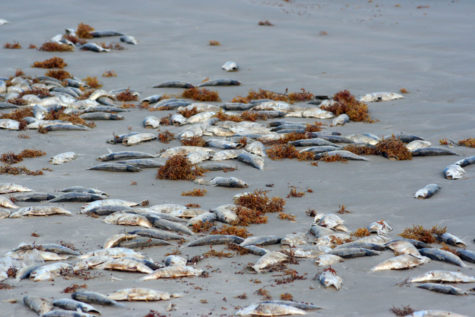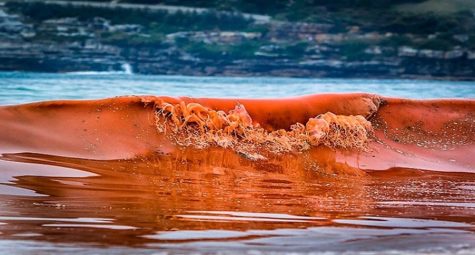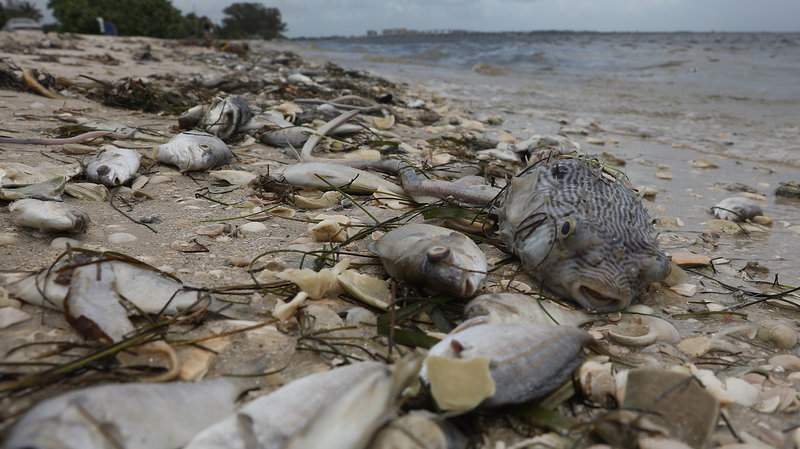Dead Fish Flowing on Shore in Florida
November 2, 2018
 Florida’s beaches this year have had several issues going on with its waters. There has been evidence of dead marine life floating up to shore, which has caused beaches to be closed because of this and the bad stench of the carcasses.
Florida’s beaches this year have had several issues going on with its waters. There has been evidence of dead marine life floating up to shore, which has caused beaches to be closed because of this and the bad stench of the carcasses.
An unusually persistent and harmful algal bloom (red tide) is currently affecting portions of the coasts of Florida. This caused by Karenia Brevis algae that produces toxins that can cause fish deaths, respiratory irritation, and mortality of sea turtles, manatees, birds, and dolphins.
When hurricane Michael was going through the north of the Gulf of Mexico, northwest Florida had an east side wind a couple of days before Michael made landfall, which brought a rough surf to that side of Florida’s beaches. It also carried the dead fish up to shore and some even ending up in backyards, as well as destroying peoples docks.
The reasoning for all of this is because there is algae bloom and this algae bloom happens when it is caused by a bloom of toxic red dinoflagellates and other algae. The up welling of nutrients from the sea floor from massive storms is most likely the cause of these events.
According to the Florida Fish and Wildlife Conservation Commission (FWCC), the water is safe enough for humans swim and play in, but you will get symptoms of itchy skin, burning eyes, and respiratory irritation when wave action breaks open cells and the toxins become airborne. These symptoms are normal for anyone who is being exposed to the affected coastal environment.
The medium and low concentration will stay the same through out the whole month of November. Marine life will remain decreasing because of the infected algae that will keep spreading. Not only has this affected marine life, but also birds. The red tide has also spread to waters in Santa Rosa, Okaloosa, Walton, and bay counties.
The red tide has also spread to waters in Santa Rosa, Okaloosa, Walton, and bay counties.
Hopefully, sooner or later, the concentration and the production of breve-toxins decreases because the marine life cannot continue dying.
Unfortunately, no one can predict when this red tide will break away. Scientists have labeled it the worst in a decade as it’s stretched across 125 miles of coastline. Normally this could end during or after winter, but there is uncertainty because of how the climate in Florida is naturally not too cold.

